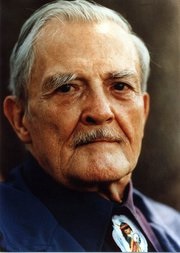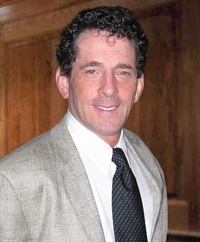Information
Dr. Erickson and Three Cases of Trauma (No CE Credit)
Original Program Date :
Description:
From the Lounsbury-Winston Collection
For this one-hour video, we reached backed into the Erickson archives, circa 1973 to 1978, to Milton Erickson’s teaching seminars. Erickson conducted these teaching seminars in the comfort and intimacy of his own home. In this video, we encounter three cases – each dealing primarily with trauma. And in each of these cases, there is hidden meaning. Erickson demonstrates how to take “extraneous” information provided by the client, understand the context relevant to the client’s problem, and insightfully extrapolate the true meaning for therapeutic effect.
This video contains a featurette from Dr. Jeffrey Zeig introducing the cases, and breaking down the techniques Erickson uses.
There are three lessons that you can extrapolate from these cases, which can be immediately applied to your own practice:
- Storytelling. Erickson was a great storyteller, and he often told stories for the client to have a realization. He worked experientially. And when he was doing hypnosis, the stories became suggestions.
- Working in a series of steps. Erickson worked incrementally. If there is hard work to be done, it is best accomplished by working incrementally in small steps. Think “baby steps.” Even when Erickson was working with repression, he never pushed the client down to relive the trauma. Rather, he would break things up into behavioral, affective, and cognitive components -- and deal with them individually. All problems are an amalgamation of these components, so addressing the components individually will promote the best outcome.
- Follow the clues. In Erickson’s world, there was no extraneous information. Anything could be used to advance the therapy. He would notice the smallest detail -- a certain posture, an inflection in a client’s voice – verbal and nonverbal behavior as clues to solving the riddle, solving the client’s problem.
Milton H. Erickson, MD

Milton H. Erickson, MD, was an American psychiatrist who specialized in medical hypnosis and family therapy. He was founding president of the American Society for Clinical Hypnosis and noted for his approach to the unconscious mind as creative and solution-generating.
Dr. Erickson was plagued with enormous physical handicaps for most of his life. At age 17, he contracted polio and was so severely paralyzed that doctors believed he would die. While recovering in bed, almost entirely lame and unable to speak, he became strongly aware of the significance of nonverbal communication – body language, tone of voice, and the way that these nonverbal expressions often directly contradicted the verbal ones. He also began to have “body memories” of the muscular activity of his own body. By concentrating on these memories, he slowly began to regain control of parts of his body to the point where he was eventually able to talk and use his arms again. His doctor recommended exercising his upper body only so Milton Erickson planned a 1,000 miles canoe trip to build up the strength to attend college. His adventure was challenging, and although he still did not have full use of his legs at the end, he was able to walk with a cane.
The Ericksonian approach departs from traditional hypnosis in a variety of ways. While the process of hypnosis has customarily been conceptualized as a matter of the therapist issuing standardized instructions to a passive patient, Ericksonian hypnosis stresses the importance of the interactive therapeutic relationship and purposeful engagement of the inner resources and experiential life of the subject. Dr. Erickson revolutionized the practice of hypnotherapy by coalescing numerous original concepts and patterns of communication into the field.
The novel psychotherapeutic strategies which Dr. Erickson employed in his treatment of individuals, couples, and families derived from his hypnotic orientation. Although he was known as the world’s leading hypnotherapist, Dr. Erickson used formal hypnosis in only one-fifth of his cases in clinical practice.
Dr. Erickson effected a fundamental shift in modern psychotherapy. Many elements of the Ericksonian perspective which were once considered extreme are now incorporated into the mainstream of contemporary practice.
Jeffrey Zeig, PhD

Jeffrey K. Zeig, PhD, is the Founder and Director of the Milton H. Erickson Foundation and is president of Zeig, Tucker & Theisen, Inc., publishers in the behavioral sciences. He has edited, co-edited, authored or coauthored more than 20 books on psychotherapy that appear in twelve foreign languages. Dr. Zeig is a psychologist and marriage and family therapist in private practice in Phoenix, Arizona.

